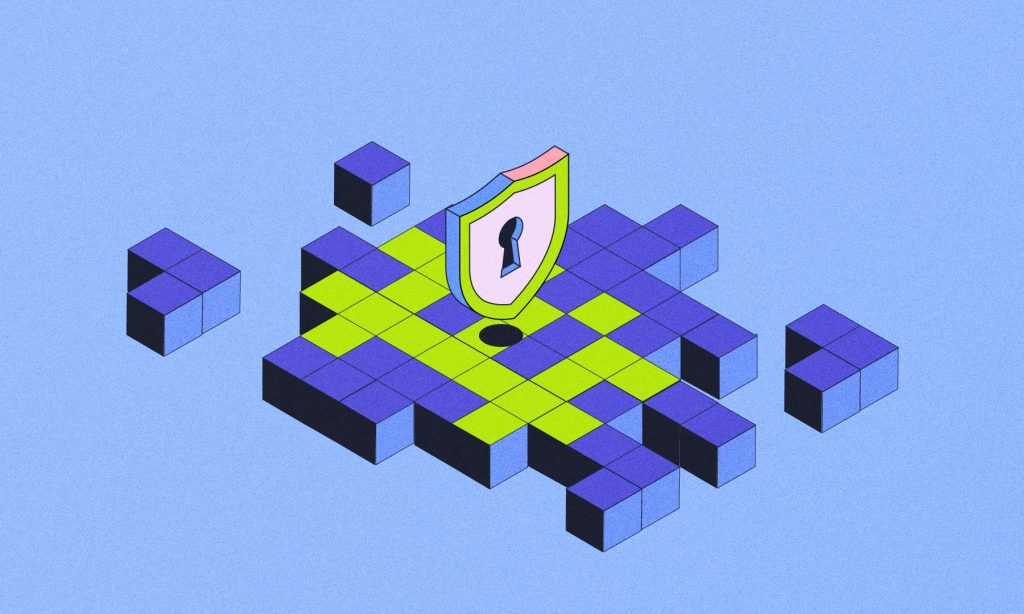The internet is considered a great leveler, personified by its new iteration, Web 3.0. The technological leap in the last couple of years has been massive, and within no time, Web 3.0 has transformed every sector in the digital space.
Blockchain technology—the backbone of crypto—is often hailed as the embodiment of Web3. AI is smarter than ever, cryptos are the newest investment avenue, and digital ownership is redefining the internet. From decentralized finance (DeFi) to non-fungible tokens (NFTs) to metaverse to meme coins, Web 3.0 is finally taking shape. However, this innovation comes with its share of concerns, such as security risks, regulatory oversight, and technical challenges. Let’s dive into what’s happening in the Web 3.0 space and its security concerns in 2025.
What is Web 3.0?
Web 3.0, also known as the semantic web, is the next stage in the evolution of the internet. Here, information is organized in a more intelligent and decentralized way. It is characterized by decentralized systems, data storage, and intelligent and personalized data processing.
Defined by decentralization, Web 3.0 leverages technologies like blockchain, AI, and IoT to offer better security, efficiency, and openness. In fact, it was created with this very objective. The birth of the technology was propelled by the desire to offer users more control over their intellectual property. Its predecessor, Web 2.0, is the current version of the Internet.
But innovations also bring security issues in their wake. Smart contract flaws, data breaches, data theft, phishing, and hacks are some common threats. Interoperability and standards are also crucial considerations while developing Web 3.0 apps. The decentralized structure of Web 3.0 technologies renders them susceptible to misuse.
Therefore, protecting user data and using stringent safety procedures, such as robust encryption and frequent security audits, is indispensable.
How is the Web 3.0 scene in 2025?
Web 3.0 has evolved over the past few years and has become a more mainstream and inclusive ecosystem, not limited to a particular sector. Major advancements in the Web 3.0 space include:
- Mass adoption: Large corporations and businesses use dApps, with improved technology making Web 3.0 services easy to use and access.
- Tokenized assets: Digital ownership through NFTs and tokenized assets has expanded beyond digital art and now dominates sectors like gaming, real estate, and intellectual property (IP).
- Enhanced privacy and security: Technologies like Zero-knowledge proofs (ZKPs) are becoming more common and offer seamless decentralized identity solutions while protecting user data.
- Interoperability and scalability: Blockchain networks can now interoperate seamlessly, thanks to Layer-2 solutions reducing costs and boosting transaction speeds.
- Metaverse integration: Virtual worlds have become more immersive, with metaverse platforms blending social interaction, commerce, and entertainment.
While technology has improved significantly, challenges remain.
Security and technical challenges in implementing Web 3.0
Fully understanding the key security problems created by decentralization and anonymity—the two celebrated virtues of Web 3.0—can take you a long way as we move into the new internet era. Here’s a lowdown on some of the key issues that deserve attention.
Threats to Web 3.0 security and privacy
Hacking assaults, smart contract flaws, data leaks, identity theft, spamming, and bad actors are evident threats to Web 3.0. In addition, there are privacy issues due to the immutability of blockchain information, not to mention the complexity of adopting privacy-protecting technology.
Interoperability and standardization in Web 3.0
Connectivity with other blockchains and standardization is essential to developing Web 3.0. However, that was not possible for a while.
This issue is being addressed by enabling blockchains to embrace standard protocols and standards. With these standards in place, blockchains can interact seamlessly and collaborate. Doing this allows for a more interconnected and decentralized web, opening up new avenues for creativity and cooperation.
Social engineering complications
The anonymity of Web 3.0 makes it harder to identify social engineering scams. While the blockchain cannot be modified, human error remains a weakness hackers may exploit. Users can fall prey to social engineering and have their information compromised.
Cyberattacks on smart contracts
Unfortunately, bad actors can use smart contracting flaws to their advantage. Such flaws undermine essential Web 3.0 capabilities like blockchain payments and crypto wallets. Hackers look for insecure smart contracts and incorporate harmful code into the contract code. When this happens, users are left at their mercy. Worse, the lack of comprehensive rules surrounding smart contracts means no meaningful legal protection.
Information integrity
The emphasis on decentralization and anonymity in Web 3.0 can worsen the issue of misinformation. The fact that centralized servers do not control or manage content in Web 3.0 can also impact user confidence.
Responsibility
Due to Web 3.0’s focus on privacy, it is difficult to pinpoint responsibility and identify bad actors. Thus, criminals can dodge legal action more easily. Web 3.0 users are also susceptible to fraud and theft by anonymous bad actors.
Sustainability
Web 3.0 relies on decentralized networks, which require significant energy and computing resources. Developing a more sustainable and energy-efficient Web 3.0 infrastructure is a critical challenge.
Privacy
Web 3.0 is designed to give users more control over their data. However, ensuring that user data remains private and secure is a key technical challenge that needs to be addressed.
Overcoming these challenges will require time and effort. It will require ongoing research and development and collaboration between different stakeholders in the Web 3.0 ecosystem.
Best practices to build secure and scalable Web 3.0 applications
Developing safe and scalable Web 3.0 apps demands following some best practices. Let’s find out what they are.
- Implement strong encryption for data protection.
- Use decentralized technologies like blockchain.
- Follow recognized security standards and best practices.
- Conduct regular security audits to identify vulnerabilities.
- Develop a clear incident response plan.
- Prioritize user education and privacy protection.
Leveraging emerging technologies for Web 3.0 implementation
New technologies, including blockchain, AI, IoT, or decentralized storage, can help improve Web 3.0 deployment. Besides enhancing security, efficiency, and transparency, such technologies allow fresh use cases for decentralized services.
In addition to this, as a user, you could try the following:
- Make sure you’re using a dependable agreement service.
- Use robust encryption to protect your user information.
- Employ efficient or scalable memory options.
- Adopt defined protocols and specifications to maintain compatibility.
- Audit and test your applications for risks or problems regularly.
Conclusion
Despite the challenges, Web 3.0’s future appears hopeful. As more developers and organizations adopt the technology, new and creative apps that leverage blockchain and AI capabilities will emerge. To sum up, Web 3.0 can potentially create a more accessible, open internet that enables people and organizations worldwide.
FAQs
Why does Web 3.0 matter?
Web 3.0 addresses key issues of the current web, such as data privacy, security, and user control. It empowers users to manage their data without relying on centralized platforms like Google or Facebook. Enabling dApps ensures greater security and resistance to censorship. Web 3.0 also fosters innovation, supporting decentralized marketplaces, peer-to-peer networks, and new digital assets like crypto and NFTs.
What are the primary security concerns in Web 3.0 implementation?
Primary Web 3.0 security concerns include smart contract vulnerabilities, decentralized application (dApp) security, identity management, data privacy, interoperability, and potential regulatory challenges.
What measures can users take to enhance their Web 3.0 security?
Users can enhance Web 3.0 security by storing crypto in hardware wallets, implementing strong password management, enabling two-factor authentication, verifying smart contract codes, and remaining vigilant about phishing attempts.
How do smart contracts address security challenges in Web 3.0?
Smart contracts address security challenges in Web 3.0 through code transparency, immutability, and automation. Auditing and secure programming practices help mitigate vulnerabilities and ensure tamper-resistant execution of agreements and transactions.
What are the main security threats faced by blockchain-based Web 3.0 applications?
Security threats faced by blockchain-based Web 3.0 applications include 51% attacks, smart contract vulnerabilities, private key compromise, DDoS attacks, consensus algorithm weaknesses, and lack of regulatory clarity.








